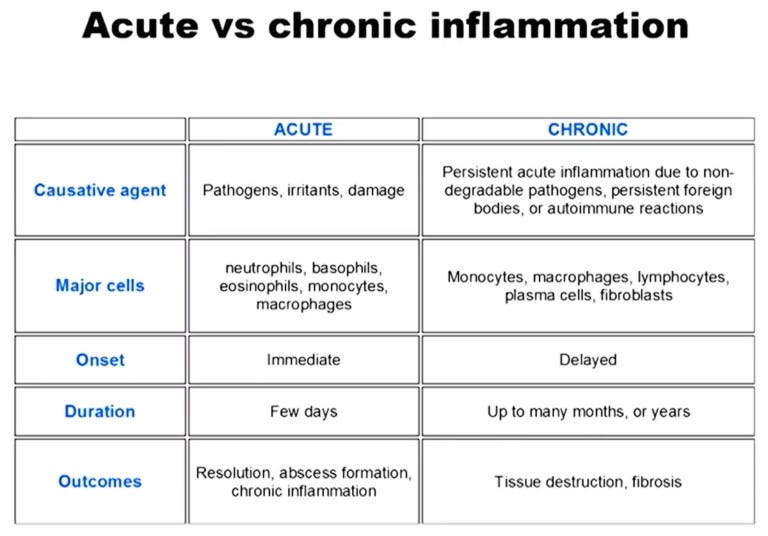Tending the Fire: Herbal Wisdom for Inflammation
how herbs help the body resolve, repair, and remember its own rhythm of healing
The term "inflammation" traces its roots to the Latin word inflammare, meaning "to ignite" or "set afire." This fiery metaphor has long been used to describe the body's response to injury or illness.
Around 25 BCE, the Roman encyclopedist Aulus Cornelius Celsus documented the four cardinal signs of inflammation, rubor (redness), tumor (swelling), calor (heat), and dolor (pain), in his medical treatise De Medicina.
Centuries later, in the 19th century, German physician Rudolf Virchow added a fifth sign: functio laesa, or loss of function.
These observations highlight inflammation as a fundamental biological process -a protective response aimed at eliminating the initial cause of cell injury, clearing out damaged cells, and establishing repair.
In the world of modern medicine, inflammation is often seen as the enemy. It's something to block, suppress, or silence - usually with pharmaceuticals designed to stop symptoms quickly. And in acute, life-threatening situations, that approach can be lifesaving.
But in the broader context of health and healing, we need to ask what inflammation is trying to do.
From an herbalist’s perspective, inflammation isn’t always something to shut down. More often, it's a sign that the body is doing exactly what it should: mounting a response, clearing out debris, and beginning the repair process. The redness, heat, and swelling we associate with inflammation are not just symptoms. They’re signs that the body is actively working toward healing.
Anti-inflammatory herbs don’t override this process. They don’t work like a sledgehammer to stop inflammation completely. Instead, they act more like guides - modulating the cascade, calming what’s excessive, and supporting the body’s own ability to resolve inflammation.
The goal isn’t to suppress but to assist. Not to smother the fire, but to help it burn clean.
This difference in approach matters. When we reflexively shut down inflammation without asking why it’s there, we risk disrupting the body’s healing intelligence. Steroids and NSAIDs have certainly saved lives, but they’ve also brought side effects and contributed to deeper patterns of imbalance.

Acute vs. Chronic Inflammation
Herbalism invites us into a more nuanced relationship with inflammation. It asks us to pay attention.
To support what is healing rather than just silence what is uncomfortable. And perhaps most importantly, to know when inflammation needs gentle support - and when it needs to be quieted.
Inflammation is one of the body’s most ancient and essential biological responses. It’s a built-in system for surveillance and repair - mobilizing immune cells to address injury, infection, or irritation, clearing away damaged tissue, and initiating the healing process. At its best, inflammation is a cycle of protection and renewal.
This is the realm of acute inflammation, the kind that flares up quickly in response to injury or harmful stimuli. Blood vessels widen, heat and swelling appear, and white blood cells like neutrophils rush in to neutralize threats and begin repair. Lymphatic vessels help drain excess fluid and debris, while chemical messengers like histamine and nitric oxide coordinate the response. Within days, the process resolves, and tissue begins to mend.
But when inflammation lingers longer than it should, or when it’s triggered repeatedly by persistent infections, environmental toxins, poor diet, or immune dysfunction, the body’s healing response can become harmful.
Chronic inflammation is slower, quieter, and often harder to detect. It simmers beneath the surface, impairing mitochondrial function, increasing oxidative stress, and disrupting communication between cells.
Over time, this ongoing immune activation contributes to many of the chronic diseases we see today - cardiovascular conditions, type 2 diabetes, autoimmune disorders, neurodegeneration, and even cancer.
This article explores the mechanisms behind chronic inflammation and how herbal medicine can help. The goal isn’t to suppress inflammation altogether, but to support the body in resolving it more efficiently and restoring balance.
Let’s take a closer look at what’s happening at the cellular level - and the plants that help guide the process toward healing.
acute vs chronic inflammation
The rest of this article explores how specific herbs work to modulate inflammation at the cellular level - whether through salicylates, plant-based steroidal compounds, or the more mysterious synergists that herbalists have relied on for centuries.
You’ll also find a printable materia medica monograph for Salix alba (Willow Bark), along with a cheat sheet highlighting herbal anti-inflammatories by body system.
If that sounds helpful to your herbal studies or clinical practice, I invite you to consider upgrading your subscription to access these in-depth tools.
Keep reading with a 7-day free trial
Subscribe to The Buffalo Herbalist to keep reading this post and get 7 days of free access to the full post archives.




